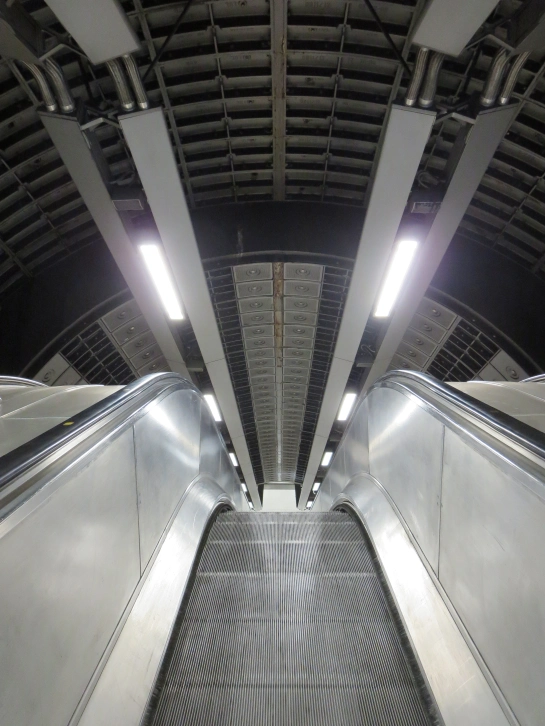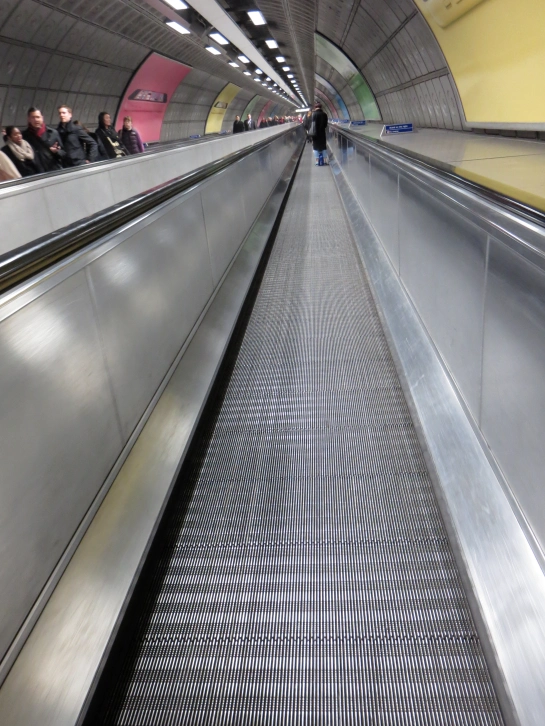 Welcome to an exclusive peek at the new look of Doctor Who’s Tardis.
Welcome to an exclusive peek at the new look of Doctor Who’s Tardis.
Yes, the roundels are back. All that steam-punk palaver is no more. Gone, the Heath Robinson-esque detritus and “charming” eccentricities. In their place, gorgeous steel curves, glittering symmetry and a hefty dollop of polish.
Well, you can but dream. Is it wrong to wander down the palatial pipes that connect the Jubilee line with the rest of Waterloo station and imagine you’re inside what people from the 20th century thought people in the 30th century might like? To draw a straight line in your mind from the most futuristic slice of the Underground all the way to the next millennium, with only the odd diversion to make way for the unexpected arrival of the Thames flood plain? To for once look forward fondly, instead of back wistfully?
 Tubular balls, you might think. And granted, you either love the shimmering fancies of this most modern of modernisations, or you probably loathe it. Grey can be a beautiful colour, but only if artfully deployed. When it’s there by default, it usually shouldn’t. But when it’s there by design, it’s a bit of a revelation. The stout walkways and nifty passages at Waterloo are one of the unexpected triumphs of the Jubilee line extension.
Tubular balls, you might think. And granted, you either love the shimmering fancies of this most modern of modernisations, or you probably loathe it. Grey can be a beautiful colour, but only if artfully deployed. When it’s there by default, it usually shouldn’t. But when it’s there by design, it’s a bit of a revelation. The stout walkways and nifty passages at Waterloo are one of the unexpected triumphs of the Jubilee line extension.
Unexpected, because Waterloo comes with the baggage of over 100 years of existence. It wasn’t magicked into being from scratch like your Southwarks or North Greenwichs. It laboured long under associations with congestion and gloom and long, long treks to get to the platforms. It still does, for many. But here’s why an encounter with its youngest, freshest offspring feels more like a joy than a chore. It is still, over a decade on from its opening, thrumming with the shock of the new.
 Heavens, there’s even a travelator. And there’s only one other to be found on the whole Underground (which is also ace, naturally). What more of a beguiling gimmicky gesture towards modernity do you possibly need?
Heavens, there’s even a travelator. And there’s only one other to be found on the whole Underground (which is also ace, naturally). What more of a beguiling gimmicky gesture towards modernity do you possibly need?
Take a stroll along this gleaming cylinder of motion, that seems to have tumbled through time from some point that’s always just beyond tomorrow. We should feel flattered merely to have the chance to pass through such a convenience of wonder. This is what public infrastructure can be like if trust is placed in someone dubbed the Medici of London Transport.
This is what the Underground can still be like.






